The Art of Retouching in Real Estate Photo Editing
Retouching in real estate photo editing helps turn ordinary property photos into clean, bright, and professional-looking images. In today’s competitive market, visuals are key, but not all photos capture a space’s true appeal. That’s why retouching is used to fix lighting, correct colors, and remove distractions, helping listings stand out and build buyer trust.
In this article, we’ll explore what retouching is, why it matters, and the most effective techniques used in real estate photo editing.
I. Real Estate Photo Editing: What Is Retouching?
Retouching is the process of enhancing specific elements of an image after it has been captured, focusing on correcting flaws and improving overall aesthetics. In the context of real estate photo editing, this typically includes tasks such as adjusting lighting, correcting color balance, removing unwanted objects, and ensuring the photo accurately reflects the space’s potential.

This step is crucial because photos are often the first impression a potential buyer or renter has of a property. A poorly edited image can easily deter interest, causing viewers to scroll past the listing. Conversely, a well-retouched photo can immediately capture attention and invite deeper engagement.
Ultimately, retouching ensures that images are not only technically sound but also visually compelling. By making spaces appear clean, spacious, and bright, without misrepresenting reality, it significantly enhances the property’s appeal in a competitive market.
II. Key Techniques in Retouching for Real Estate Photos
1. Color and Exposure Corrections
Retouching starts with getting the lighting and colors right. This includes fixing underexposed or overexposed areas, correcting white balance so whites appear neutral (not too yellow or blue), and enhancing contrast to make interiors pop.



2. Removing Distractions
Unwanted objects such as power cords, personal items, or reflections can make a room feel cluttered or unprofessional. Retouching allows editors to remove these elements, keeping the focus on the property itself.
Watch the tutoring video at: How to Remove Distractions in Photoshop | Day 16

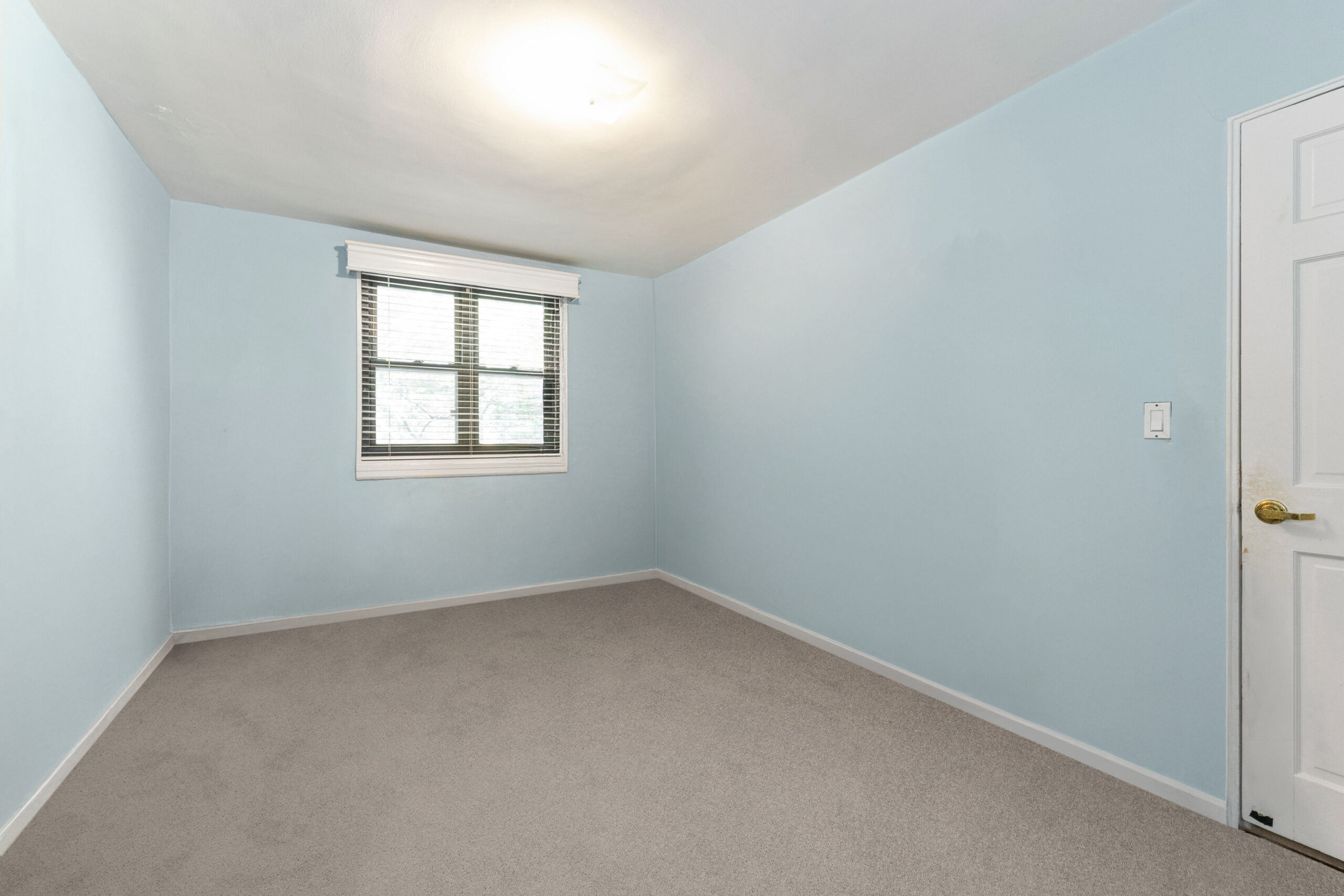
3. Straightening and Perspective Correction
Real estate photos often suffer from lens distortion, especially when using wide-angle lenses. Retouching helps straighten vertical and horizontal lines, maintaining the integrity of the architecture. Although this is a subtle edit, it adds professionalism.
4. Sky Replacement and Lawn Enhancement
Exterior images benefit greatly from retouching. A dull sky can be replaced with a vibrant blue or sunset sky to enhance mood. Similarly, patchy lawns can be subtly enhanced to appear greener and healthier. However, it’s important not to overdo it.
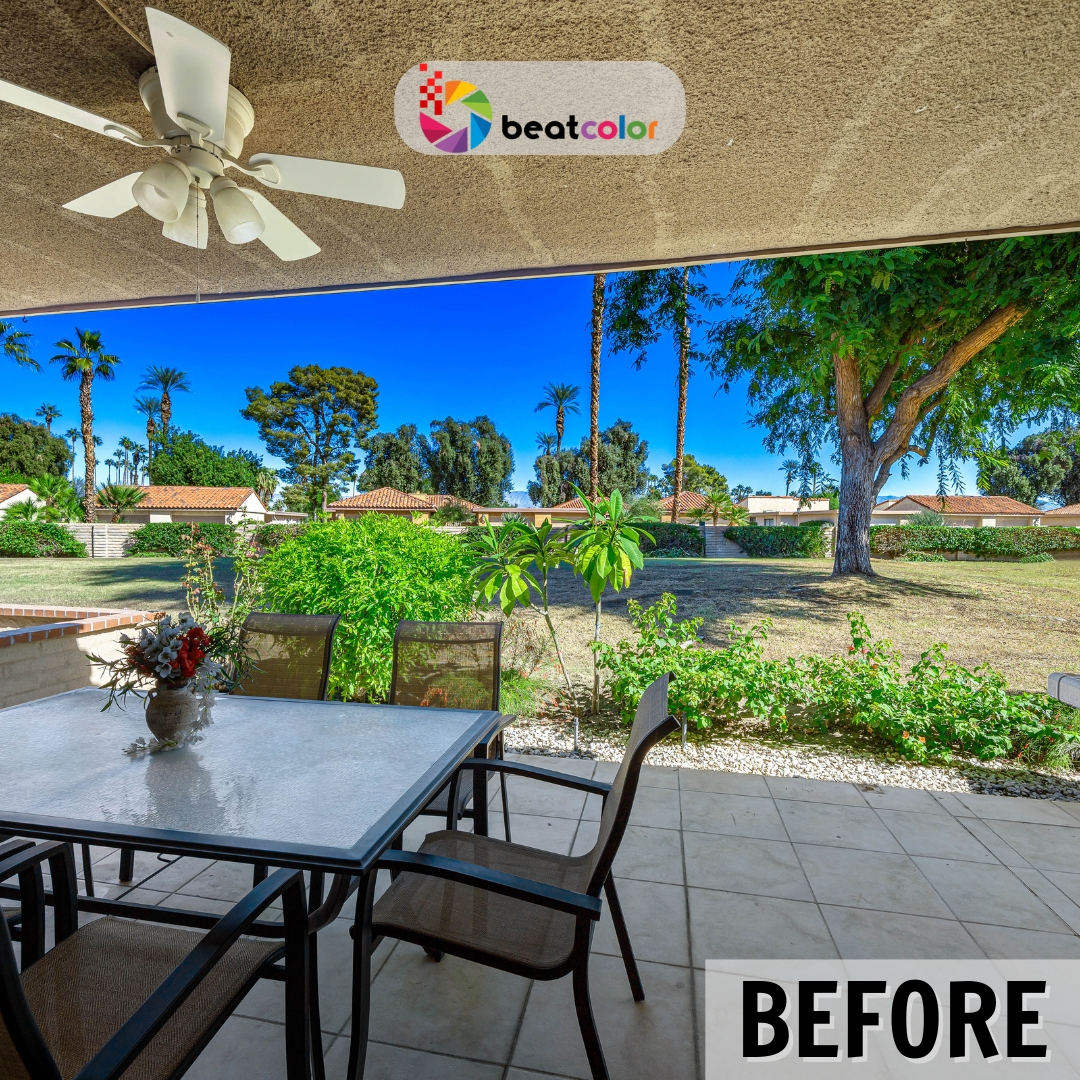
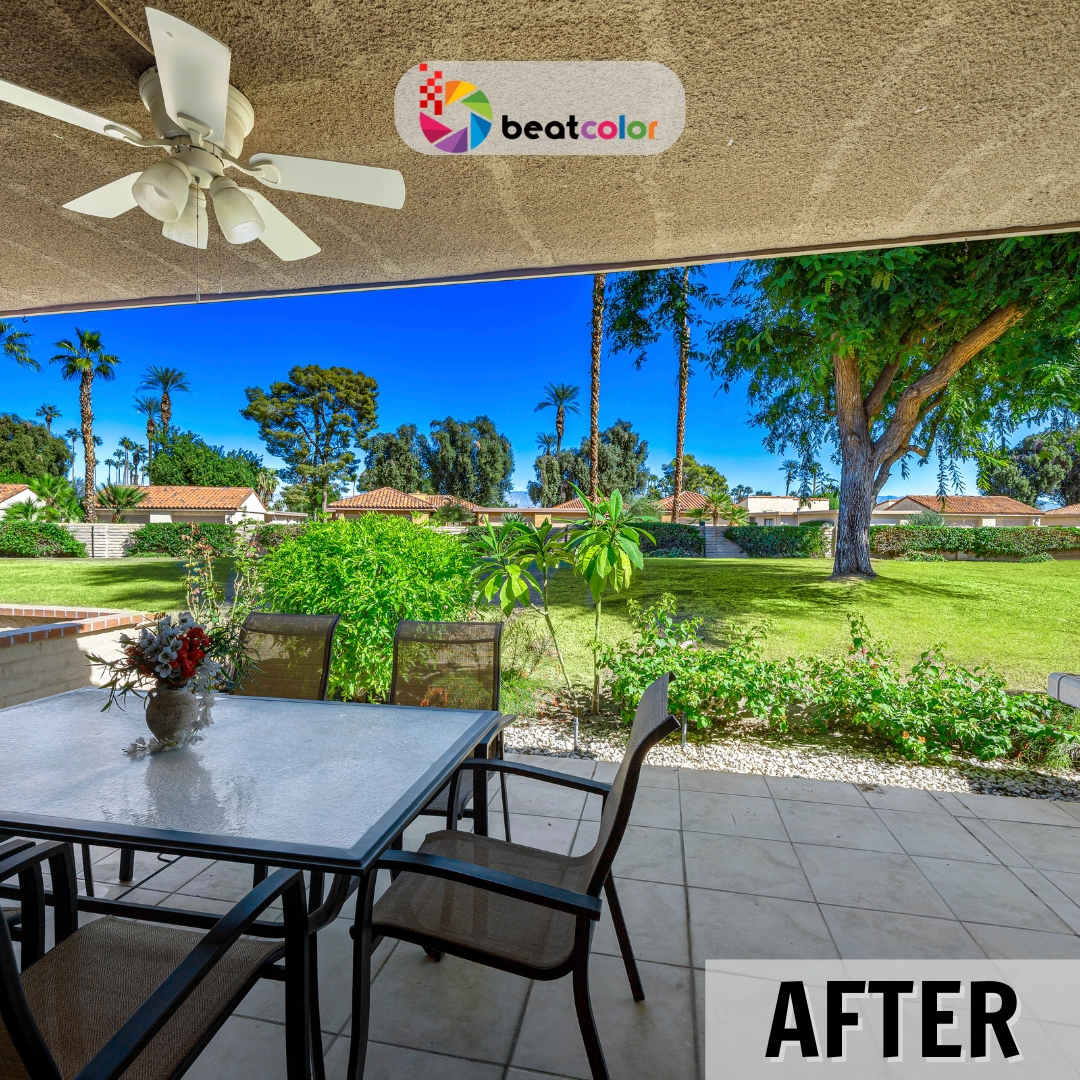
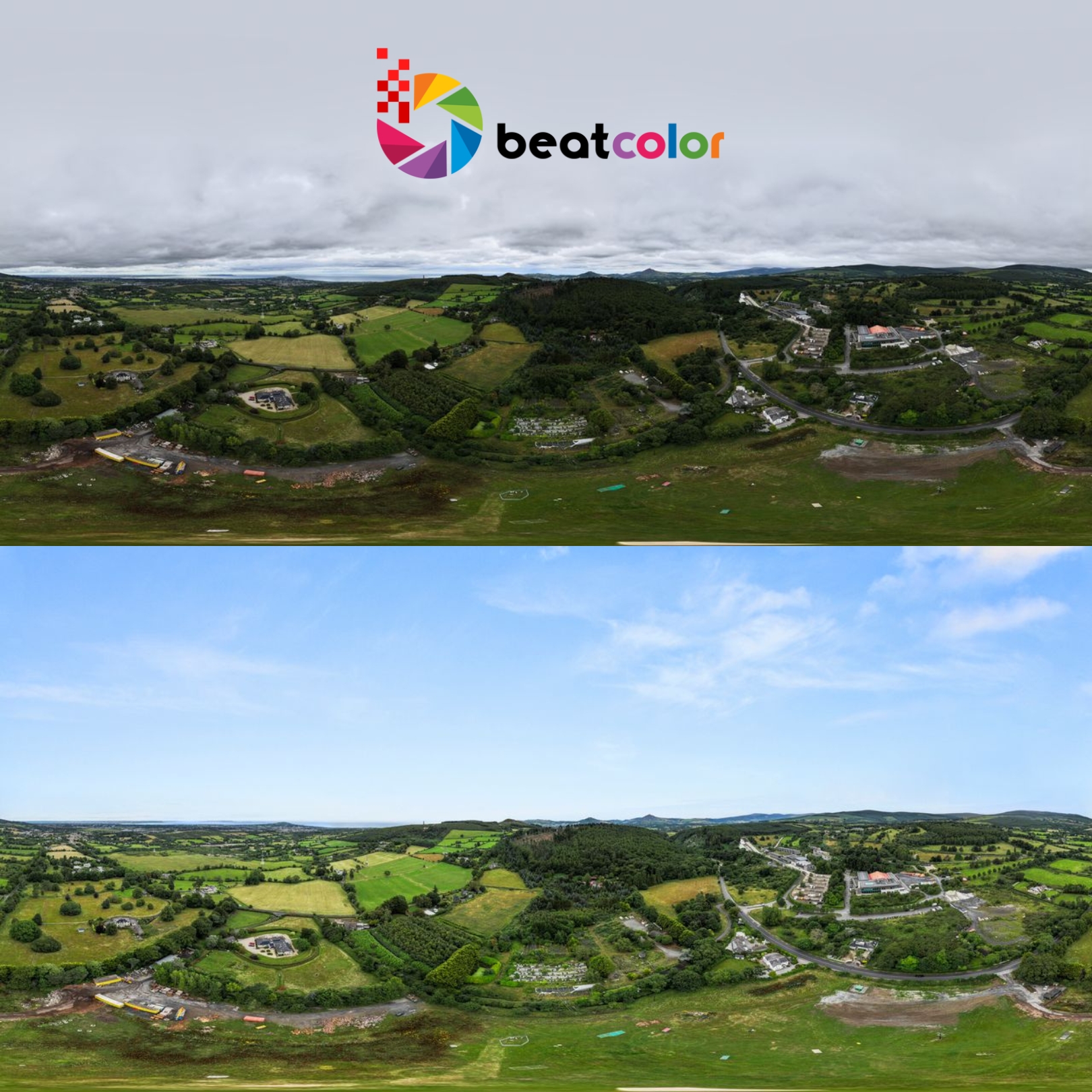
5. Day-to-Dusk Conversions
A popular retouching service involves converting daytime shots into warm twilight scenes. This gives the image a cozy, inviting feel, especially effective for marketing premium properties.
Related reading: Real Estate Photo Editing Service with Virtual Dusk


III. Best Practices for Retouching in Real Estate Photo Editing
1. Prioritize Authenticity
While it’s tempting to make every image look flawless, honesty is essential. Over-retouching can mislead potential buyers and harm credibility. Enhancements should stay true to the actual condition of the property.
2. Use High-Resolution Images
Next, retouching is most effective when the source images are sharp and well-composed. A blurry or poorly lit image limits the potential of editing.
3. Stay Consistent Across All Photos
In addition, listings with a cohesive visual style build trust and professionalism. Use the same level of brightness, white balance, and contrast across all images in a listing. This consistency helps create a seamless viewing experience.




4. Optimize Images for Web
Furthermore, edited photos should be exported in web-friendly formats and resolutions. This ensures fast loading times and high-quality visuals on property listing platforms. Don’t forget to compress without losing quality.
5. Ethical Considerations
Finally, although some advanced retouching can add or remove features (like virtual staging), it’s important to disclose such changes. Transparency builds long-term trust with clients and buyers.
IV. How Retouching Impacts the Real Estate Industry
Retouching in real estate photo editing is a vital process for creating clean, bright, and professional-looking property images. In today’s competitive real estate market, high-quality visuals often serve as the first impression for potential buyers or renters. Therefore, well-edited photos can significantly increase interest and set a listing apart from others.
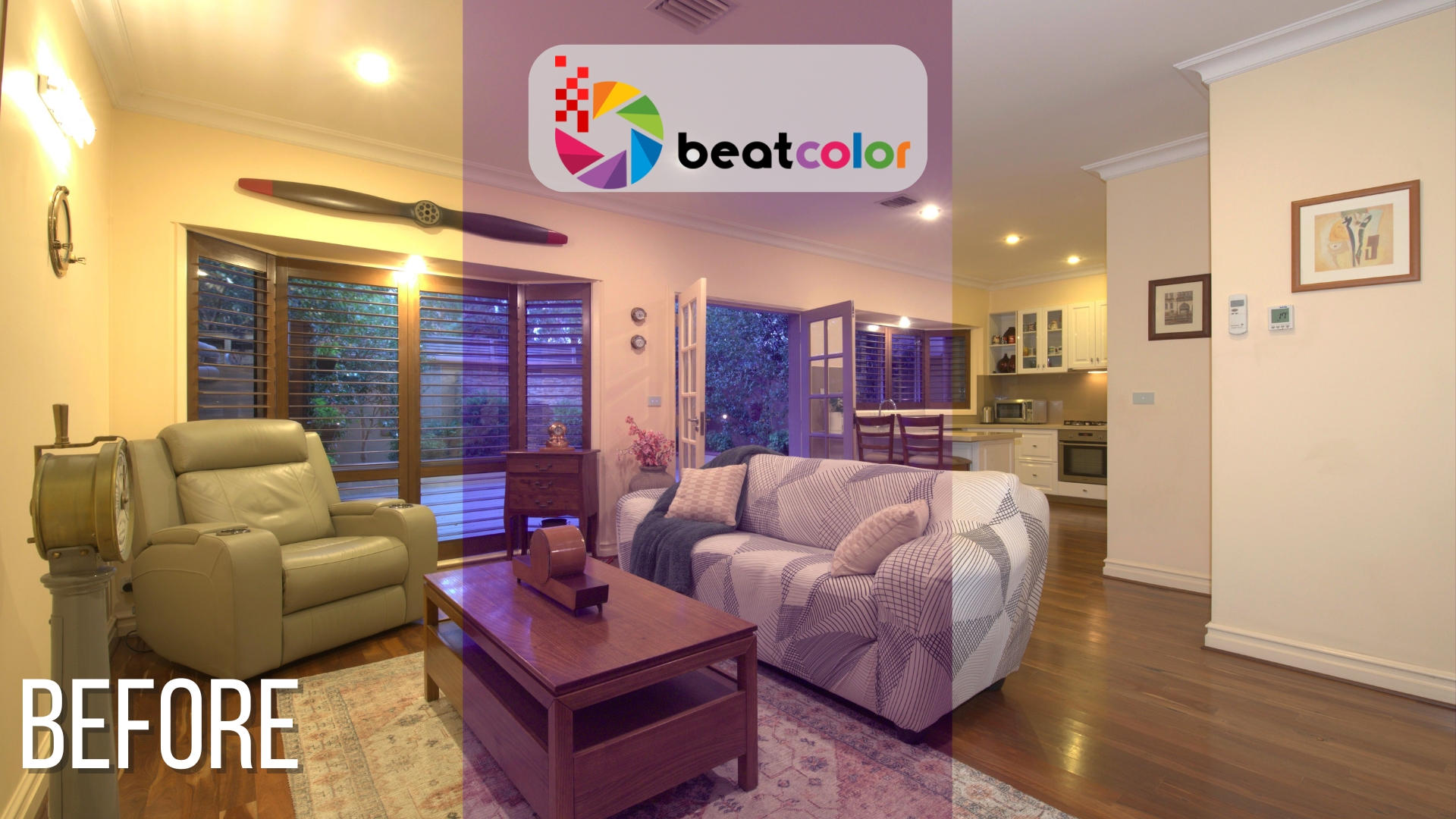
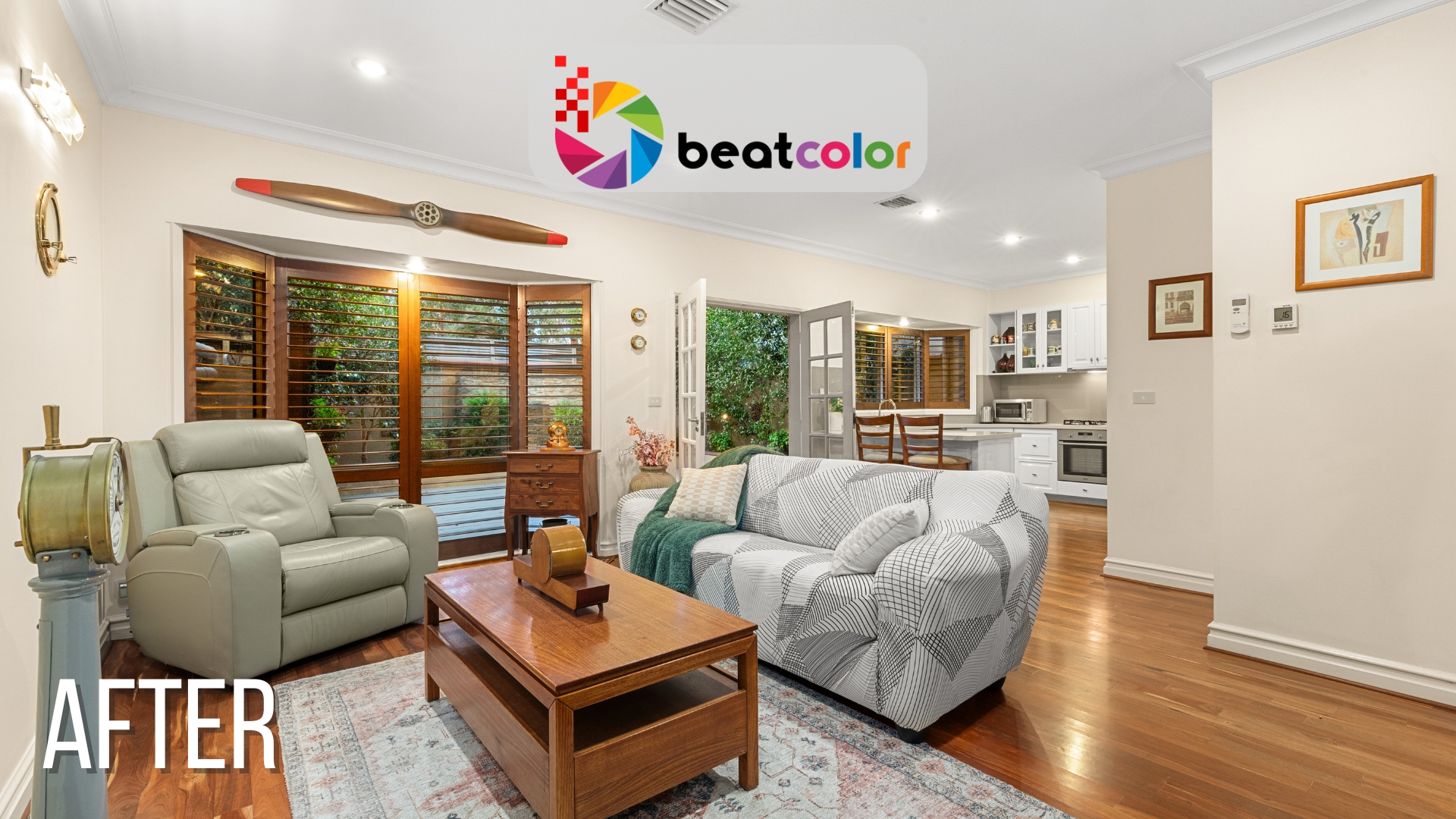
However, not all property photos naturally capture the space’s true potential. Even a beautifully staged room may look dull or cramped due to poor lighting, distracting elements, or awkward camera angles. These flaws can reduce a property’s appeal and discourage potential clients.
That’s why retouching is essential. It allows editors to adjust lighting, balance colors, straighten lines, and remove unwanted objects, enhancing the overall look without misrepresenting the property. Moreover, retouching ensures that images remain authentic while presenting the space in its best light.
In contrast to unedited or poorly edited photos, professionally retouched images build trust with viewers and encourage them to spend more time exploring the listing. This ultimately increases the chances of a successful sale or rental, making retouching an indispensable part of real estate marketing.
Final Thoughts
In summary, retouching in real estate photo editing isn’t just an extra step. It’s a necessity in today’s visual-first real estate market. Done correctly, it enhances appeal, builds credibility, and supports faster sales or rentals.
Although the techniques vary in complexity, from simple color corrections to advanced edits like sky replacement or object removal, the goal is always the same: to present properties in their best light while staying truthful to reality.
Whether you’re a photographer looking to refine your post-processing, or a real estate professional aiming to improve your listings, understanding retouching gives you a strategic edge.
Read more:
The Hidden Mistakes That Can Ruin Real Estate Photos
How Important is the Photo Editing Software in Real Estate?
Furniture Replacement in Real Estate Photo Editing











